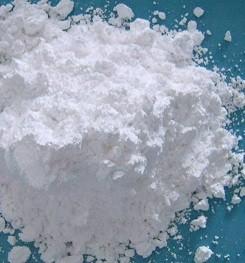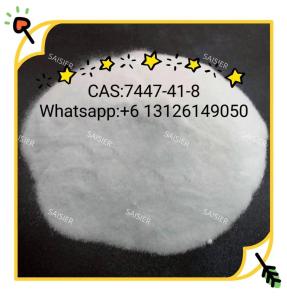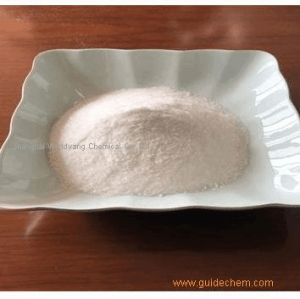| bird - wild |
LD50 |
oral |
422mg/kg (422mg/kg) |
? |
Archives of Environmental Contamination and Toxicology. Vol. 12, Pg. 355, 1983. |
| cat |
LD50 |
intraperitoneal |
492mg/kg (492mg/kg) |
? |
Russian Pharmacology and Toxicology Vol. 42, Pg. 9, 1979. |
| cat |
LDLo |
subcutaneous |
450mg/kg (450mg/kg) |
? |
Environmental Quality and Safety, Supplement. Vol. 1, Pg. 1, 1975. |
| dog |
LDLo |
intravenous |
500mg/kg (500mg/kg) |
BEHAVIORAL: FOOD INTAKE (ANIMAL)
GASTROINTESTINAL: CHANGES IN STRUCTURE OR FUNCTION OF SALIVARY GLANDS
MUSCULOSKELETAL: OTHER CHANGES |
Journal of Pharmacology and Experimental Therapeutics. Vol. 100, Pg. 429, 1950. |
| frog |
LDLo |
subcutaneous |
885mg/kg (885mg/kg) |
? |
"Abdernalden's Handbuch der Biologischen Arbeitsmethoden." Vol. 4, Pg. 1289, 1935. |
| guinea pig |
LD50 |
intraperitoneal |
624mg/kg (624mg/kg) |
? |
"Spravochnik po Toksikologii i Gigienicheskim Normativam Vol. -, Pg. 157, 1999. |
| guinea pig |
LDLo |
subcutaneous |
620mg/kg (620mg/kg) |
? |
Environmental Quality and Safety, Supplement. Vol. 1, Pg. 1, 1975. |
| human |
LDLo |
oral |
200mg/kg/3D (200mg/kg) |
BEHAVIORAL: SOMNOLENCE (GENERAL DEPRESSED ACTIVITY)
BEHAVIORAL: MUSCLE CONTRACTION OR SPASTICITY)
BEHAVIORAL: MUSCLE WEAKNESS |
JAMA, Journal of the American Medical Association. Vol. 139, Pg. 688, 1949. |
| human |
TDLo |
oral |
243mg/kg/13D (243mg/kg) |
BEHAVIORAL: SOMNOLENCE (GENERAL DEPRESSED ACTIVITY)
BEHAVIORAL: TREMOR
GASTROINTESTINAL: NAUSEA OR VOMITING |
JAMA, Journal of the American Medical Association. Vol. 139, Pg. 688, 1949. |
| mouse |
LD50 |
intracrebral |
14040ug/kg (14.04mg/kg) |
SENSE ORGANS AND SPECIAL SENSES: PTOSIS: EYE
BEHAVIORAL: SOMNOLENCE (GENERAL DEPRESSED ACTIVITY) |
Nippon Yakurigaku Zasshi. Japanese Journal of Pharmacology. Vol. 69, Pg. 75, 1973. |
| mouse |
LD50 |
intraperitoneal |
600mg/kg (600mg/kg) |
? |
Journal of Thermal Biology. Vol. 6, Pg. 87, 1981. |
| mouse |
LD50 |
intravenous |
363mg/kg (363mg/kg) |
BRAIN AND COVERINGS: RECORDINGS FROM SPECIFIC AREAS OF CNS
BEHAVIORAL: ANTIPSYCHOTIC |
Oyo Yakuri. Pharmacometrics. Vol. 7, Pg. 413, 1973. |
| mouse |
LD50 |
oral |
1165mg/kg (1165mg/kg) |
? |
Russian Pharmacology and Toxicology Vol. 33, Pg. 266, 1970. |
| mouse |
LD50 |
subcutaneous |
738mg/kg (738mg/kg) |
BEHAVIORAL: TREMOR
MUSCULOSKELETAL: OTHER CHANGES |
Acta Pharmacologica et Toxicologica. Vol. 43, Pg. 51, 1978. |
| pigeon |
LDLo |
subcutaneous |
513mg/kg (513mg/kg) |
? |
"Abdernalden's Handbuch der Biologischen Arbeitsmethoden." Vol. 4, Pg. 1289, 1935. |
| quail |
LD50 |
oral |
422mg/kg (422mg/kg) |
? |
Archives of Environmental Contamination and Toxicology. Vol. 12, Pg. 355, 1983. |
| rabbit |
LD50 |
oral |
800mg/kg (800mg/kg) |
? |
Farmakologiya i Toksikologiya Vol. 39, Pg. 53, 1976. |
| rabbit |
LDLo |
subcutaneous |
531mg/kg (531mg/kg) |
? |
Environmental Quality and Safety, Supplement. Vol. 1, Pg. 1, 1975. |
| rat |
LD50 |
intracrebral |
4800ug/kg (4.8mg/kg) |
BEHAVIORAL: ALTERED SLEEP TIME (INCLUDING CHANGE IN RIGHTING REFLEX)
BEHAVIORAL: SOMNOLENCE (GENERAL DEPRESSED ACTIVITY) |
Polish Journal of Pharmacology and Pharmacy. Vol. 26, Pg. 399, 1974. |
| rat |
LD50 |
intraperitoneal |
514mg/kg (514mg/kg) |
? |
Personal Communication from K.P. Petersen, DAK Labs., 59 Lergravsvej, DK-2300, Copenhagen, Demark, Dec. 22, 1977Vol. 22DEC1977, |
| rat |
LD50 |
intratracheal |
205mg/kg (205mg/kg) |
? |
"Spravochnik po Toksikologii i Gigienicheskim Normativam Vol. -, Pg. 157, 1999. |
| rat |
LD50 |
oral |
526mg/kg (526mg/kg) |
? |
Acta Pharmacologica et Toxicologica. Vol. 47, Pg. 351, 1980. |
| rat |
LD50 |
subcutaneous |
499mg/kg (499mg/kg) |
? |
Personal Communication from K.P. Petersen, DAK Labs., 59 Lergravsvej, DK-2300, Copenhagen, Demark, Dec. 22, 1977Vol. 22DEC1977, |

 EN
EN

 F,
F, Xn,
Xn, C,
C, Xi
Xi 






